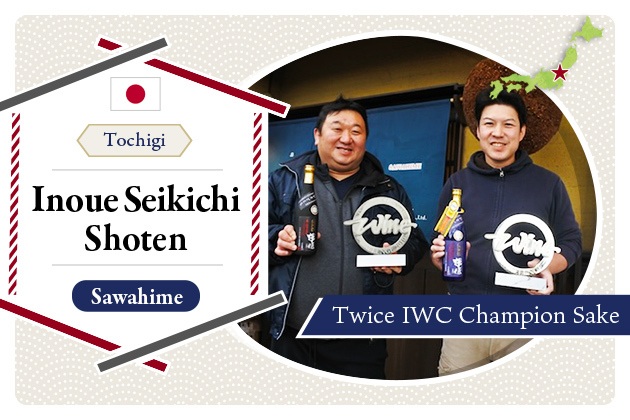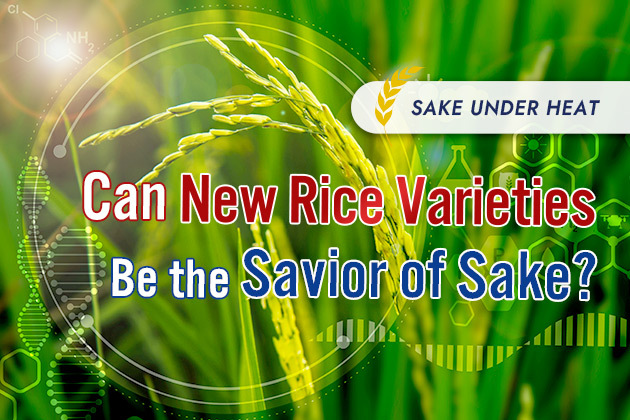
2024.01
24
The “Root of Sake Rice”: Omachi Genealogy and its 100 Year History
Enthusiasts who enjoy sake made from Omachi rice, sometimes refered to as Omachist, can be fanatical about sake made with this rice. In this article we’ll delve into characteristics, genealogy, and production area associated with this sake rice that has attracted so many fans.
Omachi, the only sake rice with a history of over 100 years
Omachi is the only sake rice variety that has been used seamlessly for 100 years out of the more than 100 existing varieties. It is believed to have been discovered 160 years ago, in 1859, by a farmer in Omachi, Takashima-mura, Kamimichi-gun, Bizen Province (present-day Omachi, Naka-ku, Okayama City).
Initially named "Nihon-gusa (two grasses)" in 1866, a new species, it was named Omachi after the region as its cultivation spread mainly in the southern part of Okayama Prefecture. From this native variety, a pure strain was isolated in 1922, becoming the Omachi we know today.
Characteristics of Omachi
Soft and soluble
Omachi is highly water absorbent and characterized by a large shinpaku, the white part at the center of the rice grain. In addition, the rice itself is soft, making it easy to dissolve during the sake making process and easily broken down into sugar by enzymes in the koji. Omachi is loved because it has many characteristics suitable for sake brewing and is easy to create targeted character and diversity in flavor.
Used for rich sake
Due to its easy solubility, Omachi is often used to make rich, full-bodied sake. Sake with a full-bodied sweetness and a gorgeous aroma, or sake with a robust flavor and acidity, are often identified as having Omachi character.
One of the leading brands of Omachi sake is Akaiwa Omachi by Toshimori Sake Brewery. They have led the revival of Omachi, which at one time was sparsely used in production. Akaiwa Omachi Junmai Daiginjo Nama was awarded the Okayama Prefecture Governor's Prize at the 2020 prefectural sake competition, providing a fresh aroma and umami flavor.
Roots of various popular varieties
Omachi, which has its roots in sake rice, has been associated with many different varieties: it is the origin of Gohyakumangoku, Aiyama and Kitashizuku and so on.
For example, Shiga Prefecture's Wataribune is said to have originally been the same variety of sake rice. lt was named Wataribune after being imported by the Shiga Prefectural Agricultural Experiment Station in 1895 and later identified as the same variety as Omachi.
(Some papers suggest that this theory should be treated with caution. Sake Street will add to or correct this article as soon as more details become available.)
Genealogy of Omachi
Typical sake rice related to Omachi are Yamadanishiki and Gohyakumangoku. Yamadanishiki was born with Tankan Wataribune, a child of Omachi, as its father and Yamadaho as its mother. Gohyakumangoku is a sake rice born from Kikusui, another child of Omachi, as its mother and Shin 200 go as its father. Both are representative varieties of sake rice in Japan, which is why Omachi is called "the root of sake rice."
There are two major patterns when “X Omachi" is written on a label. First, the label indicates the place of origin of the Omachi. The most common examples are Bizen Omachi and Akaban Omachi. Another pattern is that it is a different variety based on Omachi, such as Koi Omachi and Kairyo (revised) Omachi.
Main production area
Okayama is a Mecca for Omachi
Okayama Prefecture, the birthplace of Omachi, accounts for 90% of Omachi production. One of the reasons for the lack of dispersion among production areas is the difficulty of cultivation. Omachi is okute, a late-growing variety of sake rice, and its long stature makes it prone to collapse and susceptible to disease. Because of these characteristics, Omachi was not widely produced in other prefectures, and at one time its production was so low that it was called the phantom sake rice.
Other production areas
Other than Okayama Prefecture, it is grown in Hiroshima, Fukuoka, and Kagawa Prefectures. Hiroshima Prefecture also cultivates the improved Hiroshima Omachi. At the 2019 Omachi Summit, a sake competition held exclusively products made from Omachi, sake from Hiroshima and Kagawa prefectures also won awards of excellence.
Summary
Omachi is the grandparent of Yamadanishiki and Gohyakumangoku, two of the most popular sake rice varieties. It is often used for thick, rich, full-bodied sake with a solid core, and its unique flavor attracts many sake fans Omachists.
Knowing the characteristics of sake rice will make it easier to find the sake that best suits your tastes. Take a look at our other articles explaining other varieties.
Pickup Articles
2019.01.18
2019.01.25
Trending Articles
Popular Articles
Recent Articles













